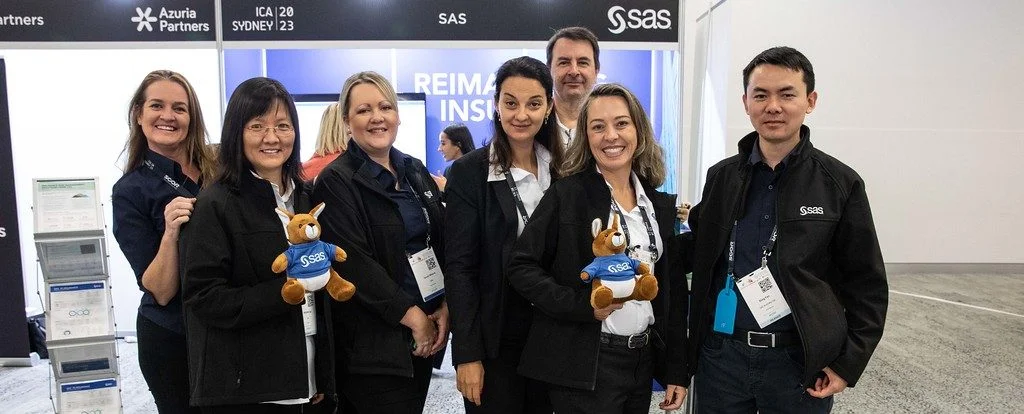Industry topics
Upcoming events
Lifelong learning

Claim your CPD points
This duality of experience has assisted Oana to leading two value propositions linked to Insurance Capital Management and Actuarial Transformation.
While my career journey began in the finance industry, I was inspired to explore the world of AI due to several factors, including the rapid advancement of AI technologies, the growing importance of data, and how these factors have contributed to the industry's transformation.
In 2012, I joined the leader of analytics, SAS Institute, in the Risk and Quantitative Solutions department which provided the opportunity to grow and develop my career. This was a great achievement as it allowed me to have both methodological input as well as be part of the real customer experiences, helping to build strategies to overcome their challenges.
Our SAS Dynamic Actuarial Modelling supports insurers during the end-to-end actuarial modelling lifecycle by offering data integration and management, data analytics, modelling and scenario analysis, business decision deployment and visualisation and reporting.SAS's actuarial solutions are also designed to help organisations meet regulatory requirements by providing the necessary tools and frameworks to ensure accurate and timely reporting, ensuring compliance with regulatory guidelines.
To cater to the diverse risk management needs of different industries, SAS provides flexible and industry-specific solutions. To give you an example, SAS helped Caser Seguro's to help them increase their efficiency in actuarial modeling and as well improving customer retention by 50% on key segments.
Together with Risk.net, SAS conducted a survey on Key Actuarial Transformation Trends Across APAC in 2022. From this we were able to capture key trends, including:
Actuaries need oversight into internal and external AI methodologies, including all processes in which they are involved. Additionally, the technologies that they are using must absorb and interpret the expectations from different stakeholders - including the regulators.
Dedicated controls and checks that monitor, audit and seek compliance with all the data ethics are essential in reducing cyber risk.
Recent disruptive world events have influenced consumers, creating a much more careful approach when choosing the policies that fit their needs.
Because of this, insurers need to be flexible and ready to optimise their profits by addressing current and future customer needs - while considering regulatory elements -before applying pricing decisions to their portfolios.
This highlights the need for digitalisation, flexibility and the breaking of silos in organisations. It also highlights the importance of bringing innovative techniques such as AI/ML to the market to add value faster, gain more market share and, ultimately, stay ahead of the competition.

Oana with Tonya Manning at the International Congress of Actuaries 2023
ICA2023 provided an opportunity for actuaries to come together and share their experiences, exchange ideas and, most importantly, provided an opportunity to generate future partnerships to address current and future market needs.
SAS was honoured to be part of the ICA2023 team, which offered the chance to share SAS risk management solutions with the actuarial community, and explore how these solutions can help address different actuarial needs, such as insurance capital management, actuarial modelling and IFRS 17.

A snapshot of SAS sponsor booth at ICA2023.
I enjoyed all the sessions on machine learning, and in particular the session that I hosted with Mark McLeod and Nika Lee, A Bayesian Approach for Driving Behaviour Investigations in Telematic Auto-Insurance Policies . In this session we shared how you can prioritise driving behaviour investigations in telematic auto-insurance policies by using a Bayesian approach. You can listen to the session here.
On top of that, Yevhen Havrylenko and Julia Heger's session Algorithmic Detection of Interacting Variables for Generalized Linear Models via Neural Networks was very insightful. In this session, they shared their experiences on algorithmic detection of interacting variables for GLMs via neural networks. Listen to it here.